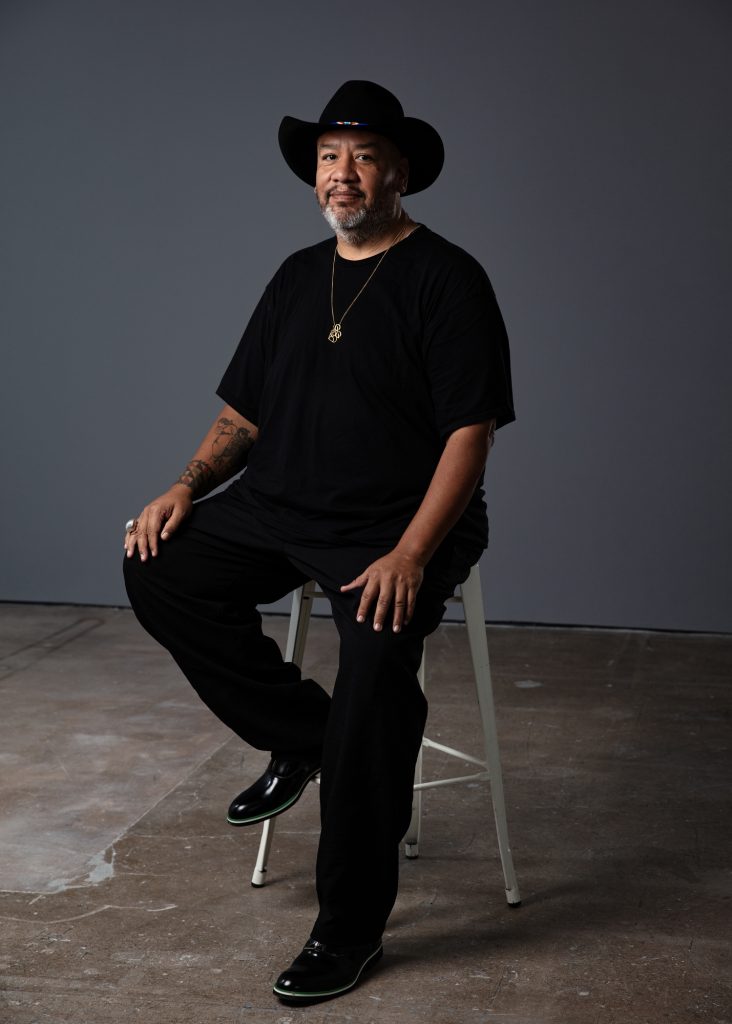
Photography by CARA ROMERO


Installation views of the space in which to place me, 2024
Photography by TIMOTHY SCHENCK
Jeffrey Gibson, an artist of the Mississippi Band of Choctaw and Cherokee descent, made history at the 60th Venice Biennale, where he was the first Indigenous artist to represent the United States in a solo exhibition. His exhibition, the space in which to place me, is an immersive installation that captures his unique approach to contemporary Indigenous identity, blending vibrant colours with profound cultural references. Gibson’s work draws on a wide range of influences, from Indigenous traditions to pop culture, using diverse media like sculpture, paintings, and multimedia installations to engage with themes of colonialism, identity, and resilience.
hube: Your work blends Native American traditions with contemporary art. How do you navigate and balance these cultural elements in your creations?
Jeffrey Gibson: It’s a constant process of thoughtfulness. I think a lot about how Native American audiences will read what I make, and how other Indigenous people will perceive it. I want to challenge how materials are used while acknowledging the inventiveness of those who came before me – those who worked with new materials coming into our communities, going back hundreds of years. I’m inspired by that ingenuity, even though we may not know the names of those makers. I try to think of them as creative individuals making decisions with what is available to them. At the same time, there are materials and forms in Native American traditions that I wouldn’t touch, as they are meant for the community, not the individual. My goal is to expand the way Indigenous people are viewed and how we see ourselves.
h: Artists have always had a unique relationship with time – the past, present and future. Which of these divisions of time are important in your work? And in what priority would you place them?
JG: It shifts for me. I’ve been working for about 25 years now, and I’d say the present has been the most significant. When I was younger, I found the present tense to be very clouded – maybe even trauma-fueled. But using the past to understand the present helps me envision the future. Recently, I’ve become increasingly interested in the past, particularly pre-Columbian Indigenous art – going back hundreds of years, looking at how we exchanged and influenced each other before contact.
h: In a world still dominated by Western and white cultural perspectives, what should museums and institutions do to better represent Native American and Indigenous communities?
JG: It’s not as simple as being told what to do. Institutions genuinely want to be inclusive, but they need to understand that Indigenous people are not a monolith. There are hundreds of tribal nations, and using blanket terms like ‘Native American’ or ‘American Indian’ flattens the rich diversity of these communities. Institutions need to learn about these differences, and then make decisions based on that understanding. Yes, mistakes will happen, but that’s how growth occurs. It’s a process, and I’m in favour of giving space for this kind of complexity. It’s not the most practical approach, but it’s what I believe in.

